Thanks to our Reading Club Sponsors!
The Library is open Saturdays 10:00-1:00.
The new library system can send out email warnings when books are due. Update your info.
The Library has over 50 decorative cake pans for loan.
History points to events
which explain the present and suggest the future.
Our history reminds us of who we have been as citizens
and who we want to be as a community.
Too often, the voice of history is silenced
by the passage of time, the loss of people, and the fog of memory.
We lose our historical roots.
Our children and grandchildren
lose the honor and pride of sharing a common heritage.
We choose to be identified with those who remember.
– Excerpt from Buna Remembered: The People
Few records are available today of the first families to settle the Buna area, but fortunately we still have a few people living who listened to stories told by their parents and grandparents, enabling us to piece together some of the events of those early years. In many of our conversations with these old-time residents, we hear of the great forests that had been virtually untouched by human hands when these early settlers arrived.
The virgin pine timber that did so much for the economy of East Texas in the late 1800s and early 1900s, was considered a nuisance by early settlers, most of whom depended upon farming for their livelihood. Before the coming of railroads and tram roads, there was no way to transport huge logs to distant mills except those trees growing near rivers.
As settlers moved in and began clearing their fields in the area that would later become Buna, they found stands of huge longleaf pine timber in the higher elevations and thick stands of hardwoods in bottomlands. Being situated at the edge of what later became known as the “Big Thicket” all the land was covered with timber of one kind or another with no open prairie that could be easily converted into farmland.
Since the tools for clearing land consisted mostly of crosscut saw, shovel, and double-bit axe, many hours of hard labor were required before a farmer could put in his first crop. Although 75 percent of the “old growth” pines varied between two and three feet in diameter, the rest exceeded three feet with records of some trees reaching five feet in diameter. Some logs were transported to small portable mills and sawed into rough boards and timbers; but for the most part, after the farmers split hardwood rails for their fences, cut a supply of firewood, and built their log cabins, the other logs were simply piled and burned.
Farmers found the soil in this part of East Texas ideal for such things as cotton, corn, peas, potatoes, and sugar cane. Fruit trees were abundant as well as other vegetable crops, but, like farmers everywhere, they had their share of freezes, droughts, and floods to contend with. With the abundant wild life in the area, farmers were also plagued by deer that ate their crops and black bear that preyed on their young livestock. The bears also had a taste for honey, and would destroy beehives to get at the tasty honey inside.
Always eager to mix business and pleasure, many of the early settlers took their hounds and went forth on organized hunts for these marauding bear. The most widely known of these early hunters in the Buna-Cairo Springs area was Valentine J. “Tine” Withers, who was born June 2, 1818, south of Louisville, Kentucky, near the Ohio River. His father, Matthew Kane Withers, moved the family to Teneha Creek in Shelby County, in April, 1837. In 1861 Tine moved from Shelby County to Jasper County.
Later area residents known for their love of bear hunting included Jerry Dunn, Andrew Jackson Whitmire, and John Wiley Morse.
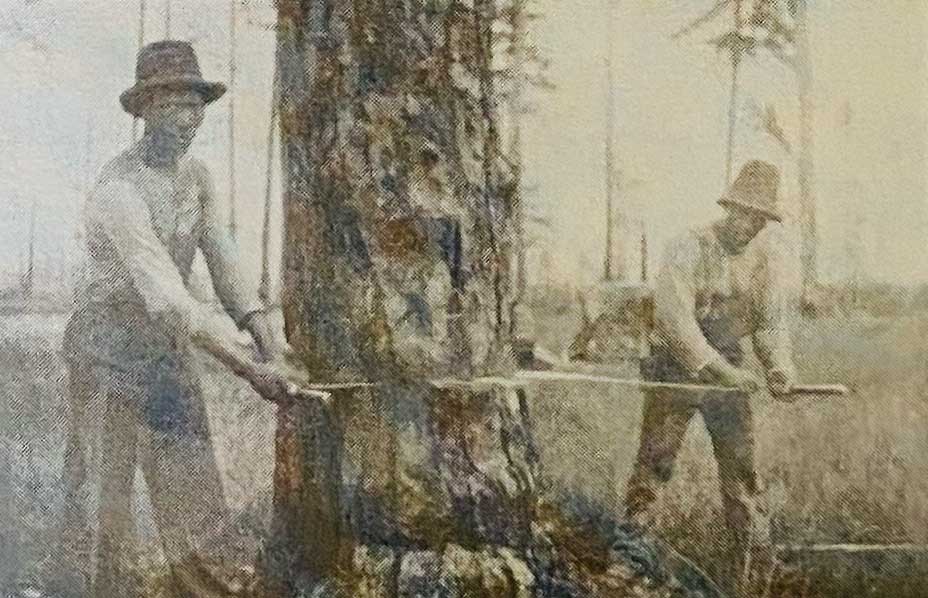
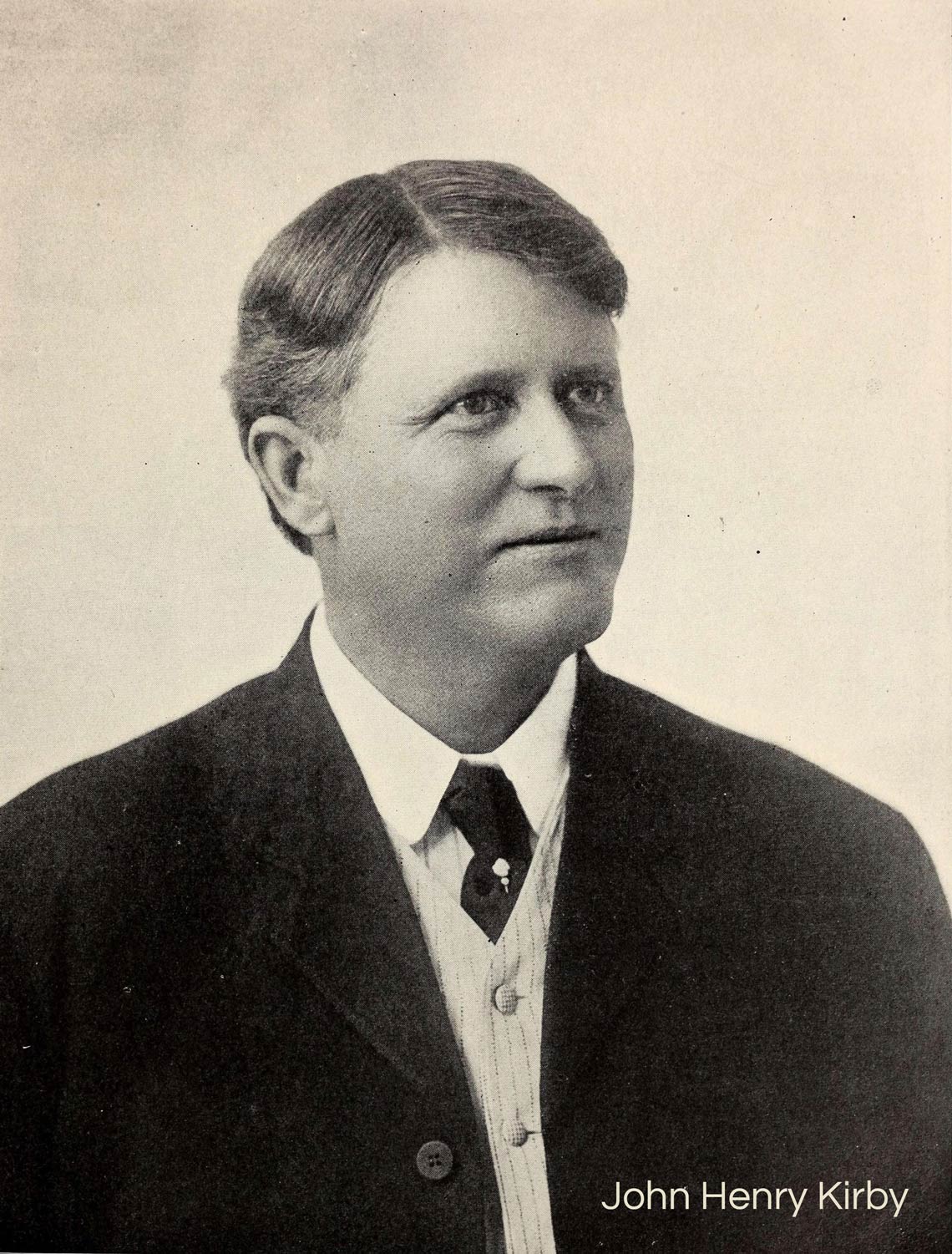

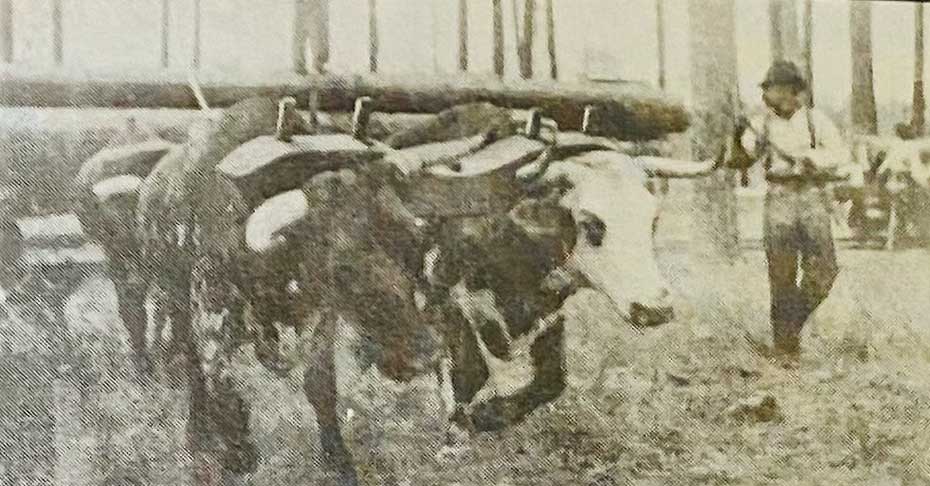
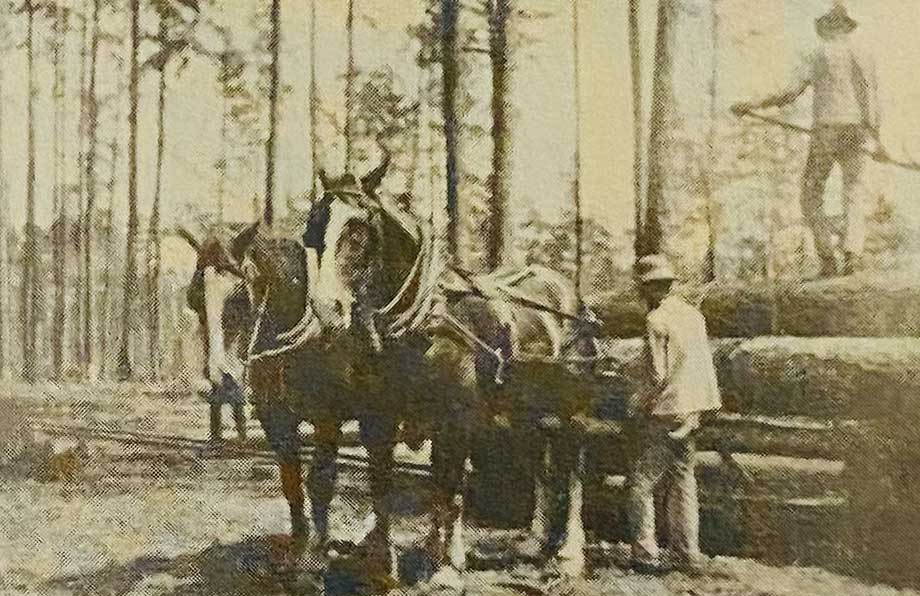
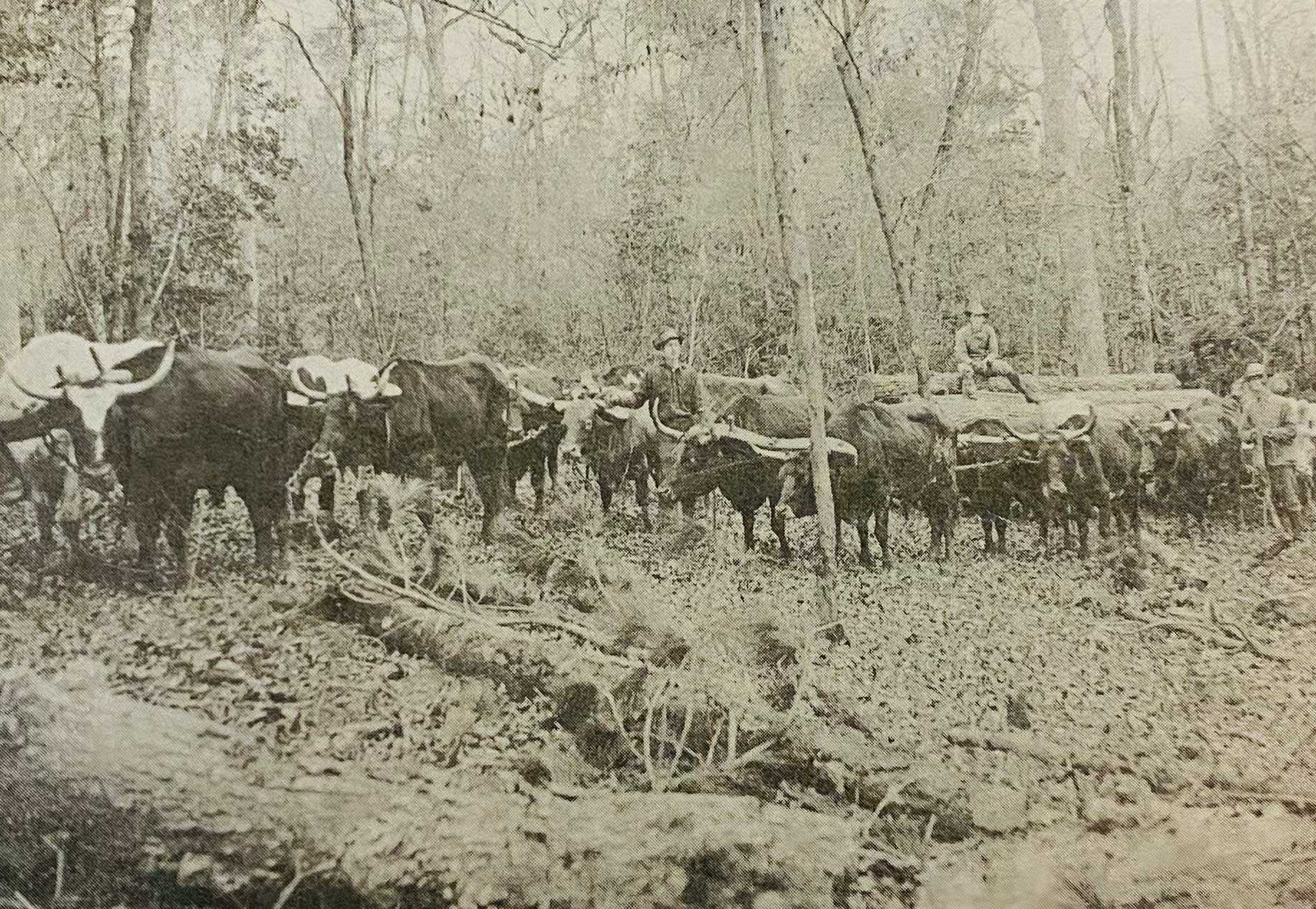
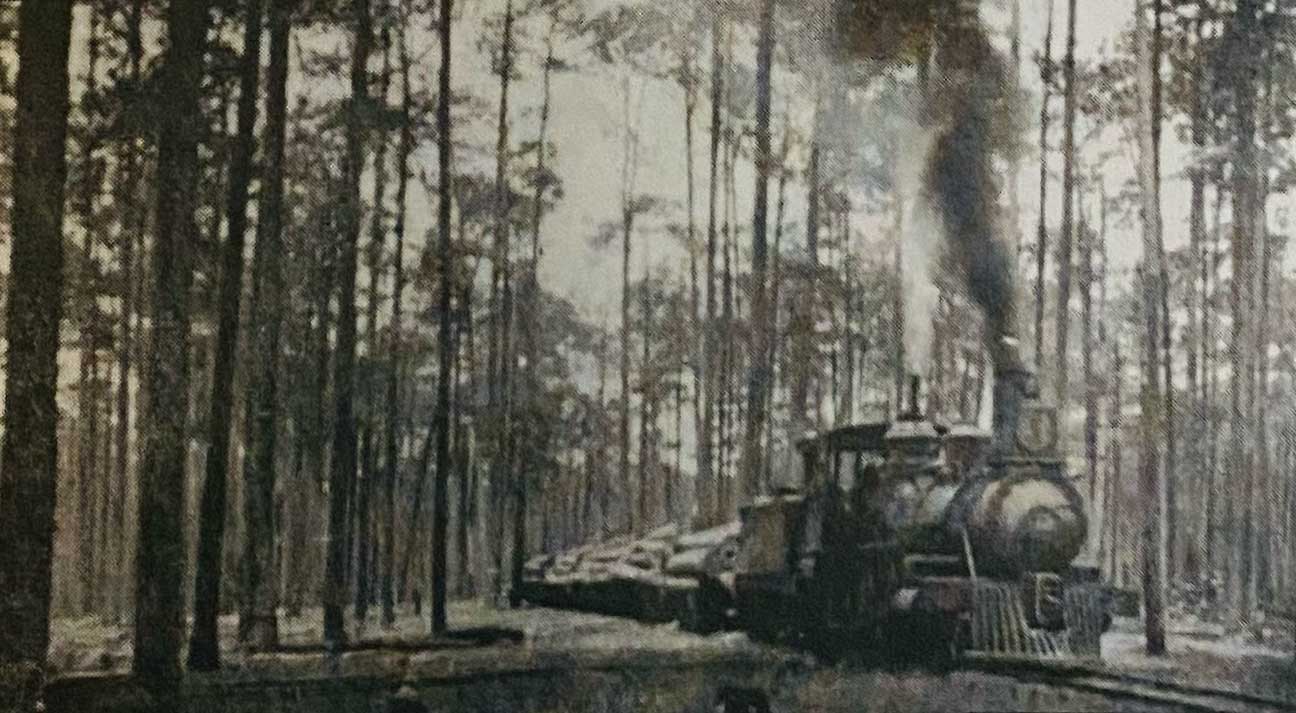
The late eighteen and early nineteen hundreds ushered in the great logging bonanza in East Texas, instituted by such men as Simon Wiess, Alexander Gilmer, Henry Lutcher, Thomas Temple, and John Henry Kirby.
Beaumont was the point of origin of several railroad lines which were later incorporated into larger systems. The Beaumont Lumber Company built a tram from Buna to Ford’s Bluff, renamed Evadale, on the Neches River.
John Henry Kirby later bought the tram line and converted it to a common carrier line. The revamped railroad was called the Gulf, Beaumont and Kansas City. He then extended this rail line from Kirbyville to Beaumont in 1895. In 1902, the Santa Fe extended this line northward through Jasper and San Augustine.
Buna’s economic position was solidified when that same year the Orange and Northwestern Railway linked the logging town with Orange. Four years later the Orange and Northwestern was extended from Buna to Newton.
Main lines branched off the railroad at various points to enable the big lumber companies to efficiently cut and transport the prime timber to their mills. Spur lines branched off about every half mile or so into the company’s holdings. These tram lines were hurriedly constructed with little grading and without benefit of a built-up road bed. The cross-ties, usually oak or pine, were laid flat on the ground by the steel gang, with many crooks and turns to miss obstructions along the way. Then came the sections of rail laid and spiked precisely 4 feet, 8½ inches wide and connected together with bolted splice bars.
Kirby did not use narrow gauge rails (3 feet wide) on his spurs and main lines. Any rolling stock that could move on the trams could also travel on the main railroad.
Upon completion of the Buna Santa Fe Depot in the 1890s, a community dance was held on the depot platform. Serving passenger trains, cattle cars, and sheep cars, in addition to its primary purpose for logging operations, the depot provided express service as well as telegrams sent by Morse Code.
Located near the junction of Highway 62 and Business 96, it adjoined a building called the
“Old tomato shed” which is now a part of Stimits Feed Store.
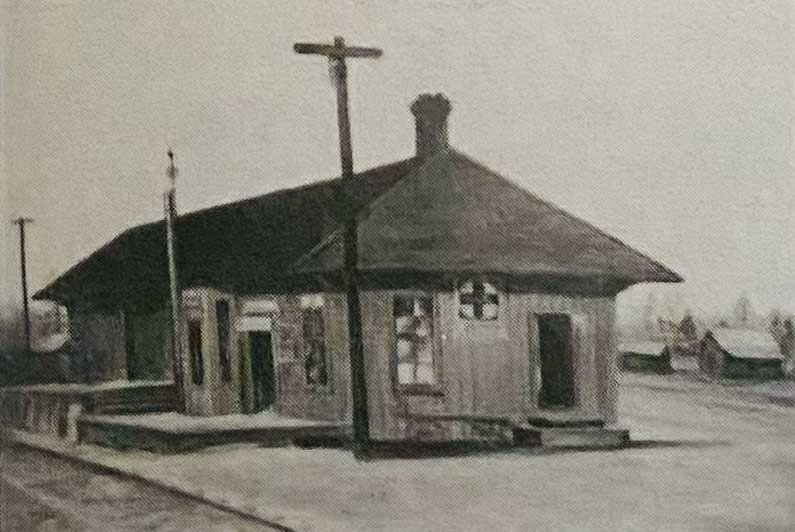
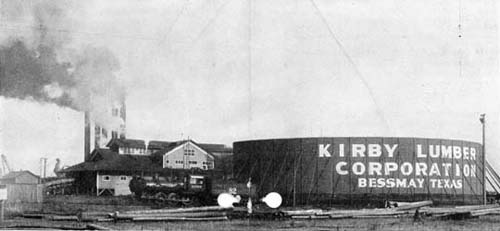
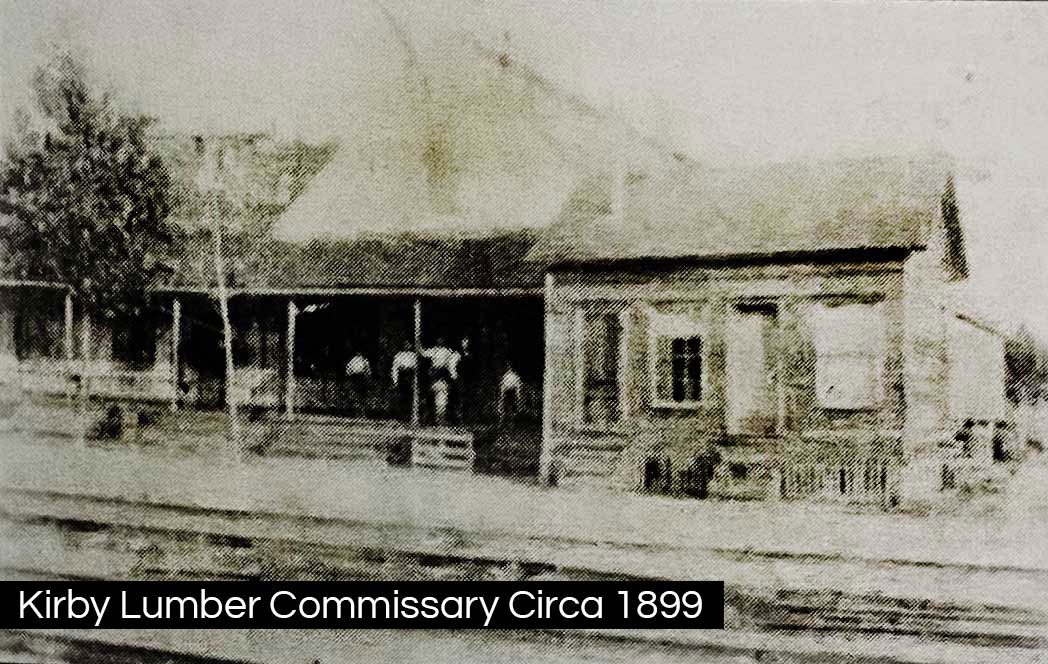
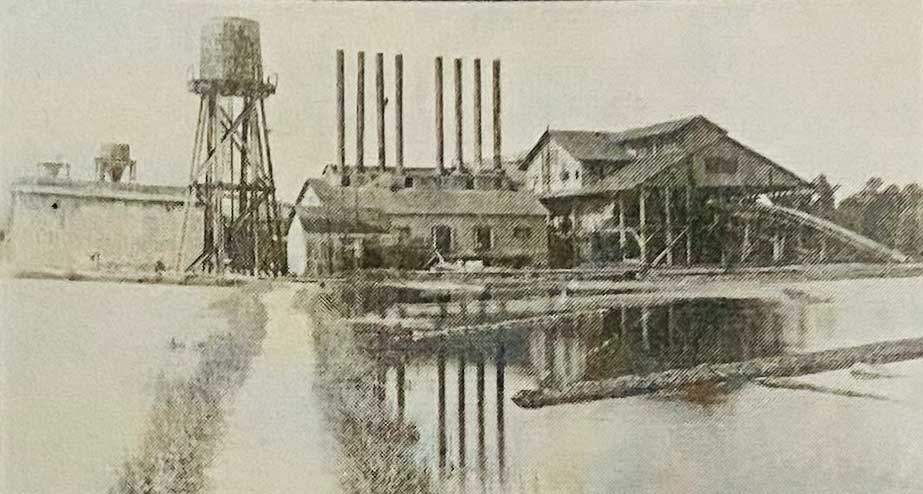
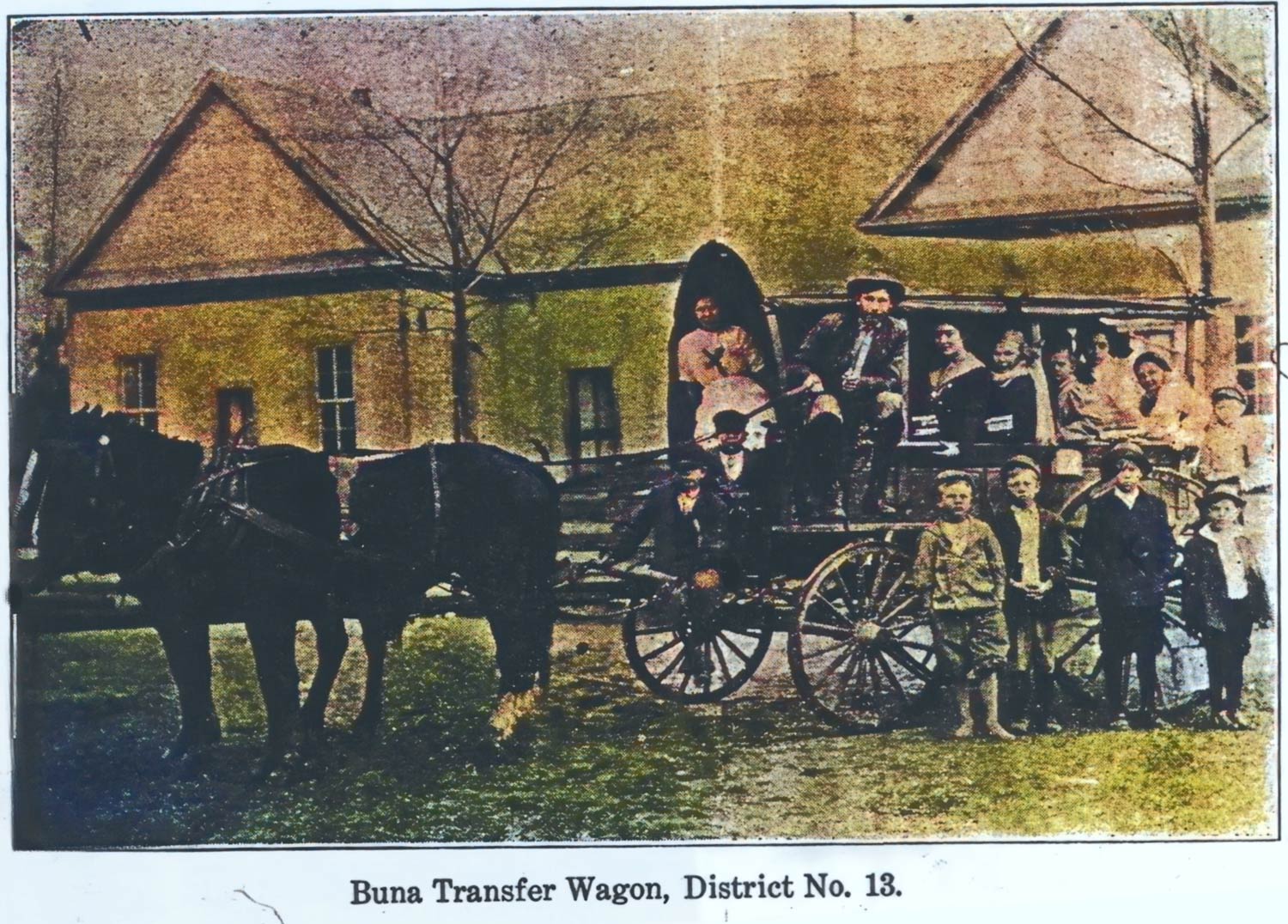

The effect of the railroads on the lumber industry was most remarkable. Lumber mills sprang up in the forests, and near them, as did related businesses and towns. Soon lumber outstripped cotton as the cash crop. The population of East Texas grew as the mills provided jobs.
In East Texas Mill Towns and Ghost Towns, W.T. Block explains that the “Yellow Bluff Tram Company [established in 1892], needing facilities for its growing camp, built a commissary and many company-owned houses for its loggers along the railroad tracks in Buna.”
The section houses consisted of three houses which were located on one side of the road and the men took care of that end of the track. Three houses were on the other side and the men took care of that end of the track. The company-owned store had everything from groceries to medicine for the crews.
The town and installations had acquired first rate status as a logging supplier with Beaumont Lumber Company, providing the most wood of more than a dozen logging camps for that company. This is illustrated in a chart in The Standard Blue Book of Texas, 1908-09.
The Yellow Bluff Tram Company facilities, including the town, were acquired by the Kirby Lumber Company in 1901 and continued to serve as a logging camp.
In 1904, the population of Buna as a Kirby Lumber Company logging camp was about 800 people. The camp director was Lee Weathersby.
In spite of being a small camp, the community was well supplied with stores. The Kirby store, commissary as it was called, was located by the tracks near the intersection of Business 96 and Highway 62. Then the Mixson Brothers store was established in 1905. It was a wooden structure located on Highway 62, across from the school.
Kirby also had a hotel erected where the Gulf Service was on the corner. The hotel was run by various families who lived there and people who rented the building. It was torn down around 1920 and the service station was constructed.
After the Bessmay sawmill was completed in 1903, Buna grew rapidly, supplying logs to the new mill. Its prominence began to diminish as the timber supply became exhausted, and John Henry Kirby closed the Buna site in 1909. The Bessmay mill continued its operations and both towns experienced growth for a period of time.
Many small towns that came into being in the late 1800s and early 1900s around logging camps and sawmills simply faded away and became ghost towns when these industries ceased operations. Buna could easily have fallen victim to these circumstances had it not been for the tenacity and resourcefulness of its residents. These hardy individuals had found a place they loved and overcame great hardships in order to stay on the land of their fathers and grandfathers.
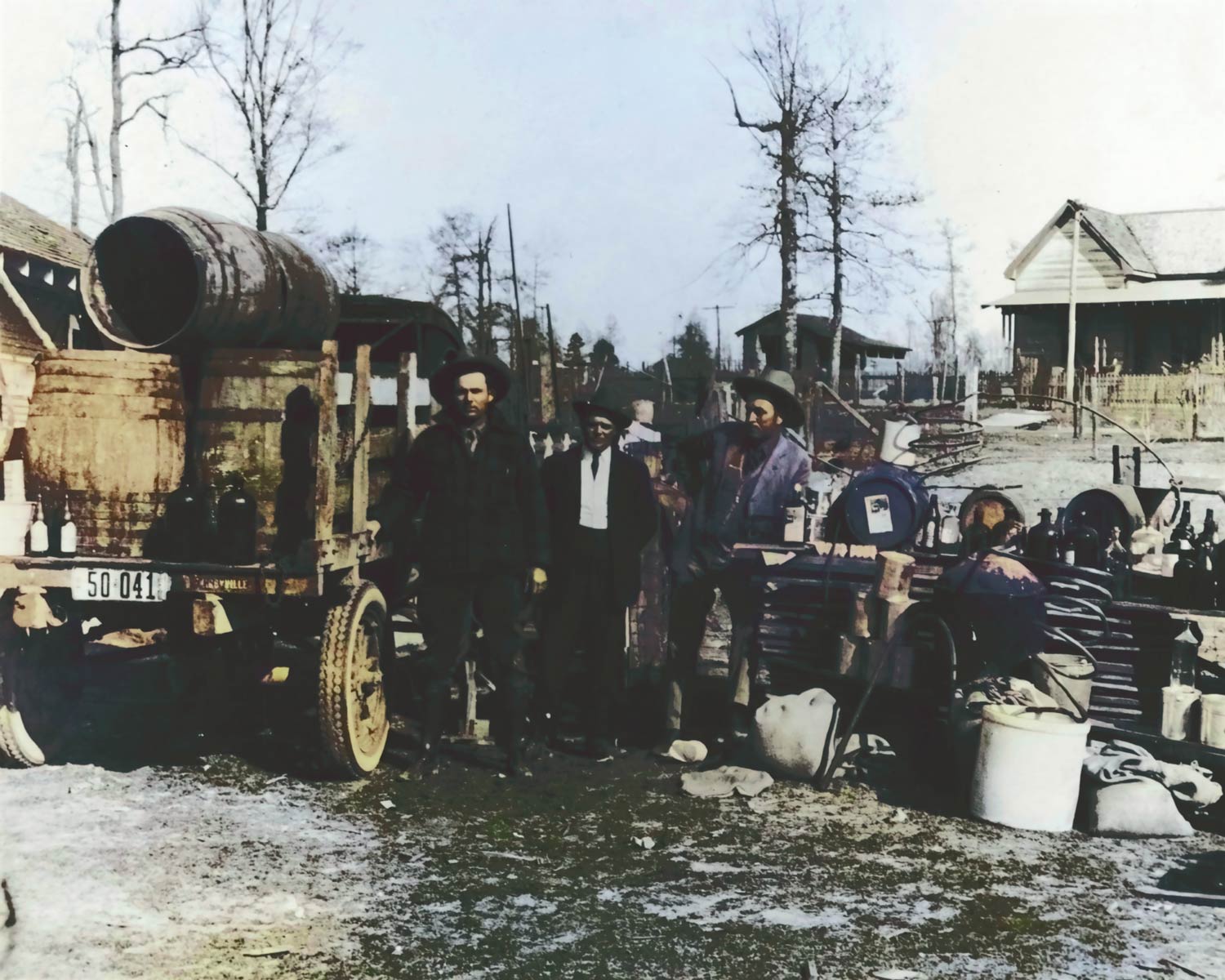
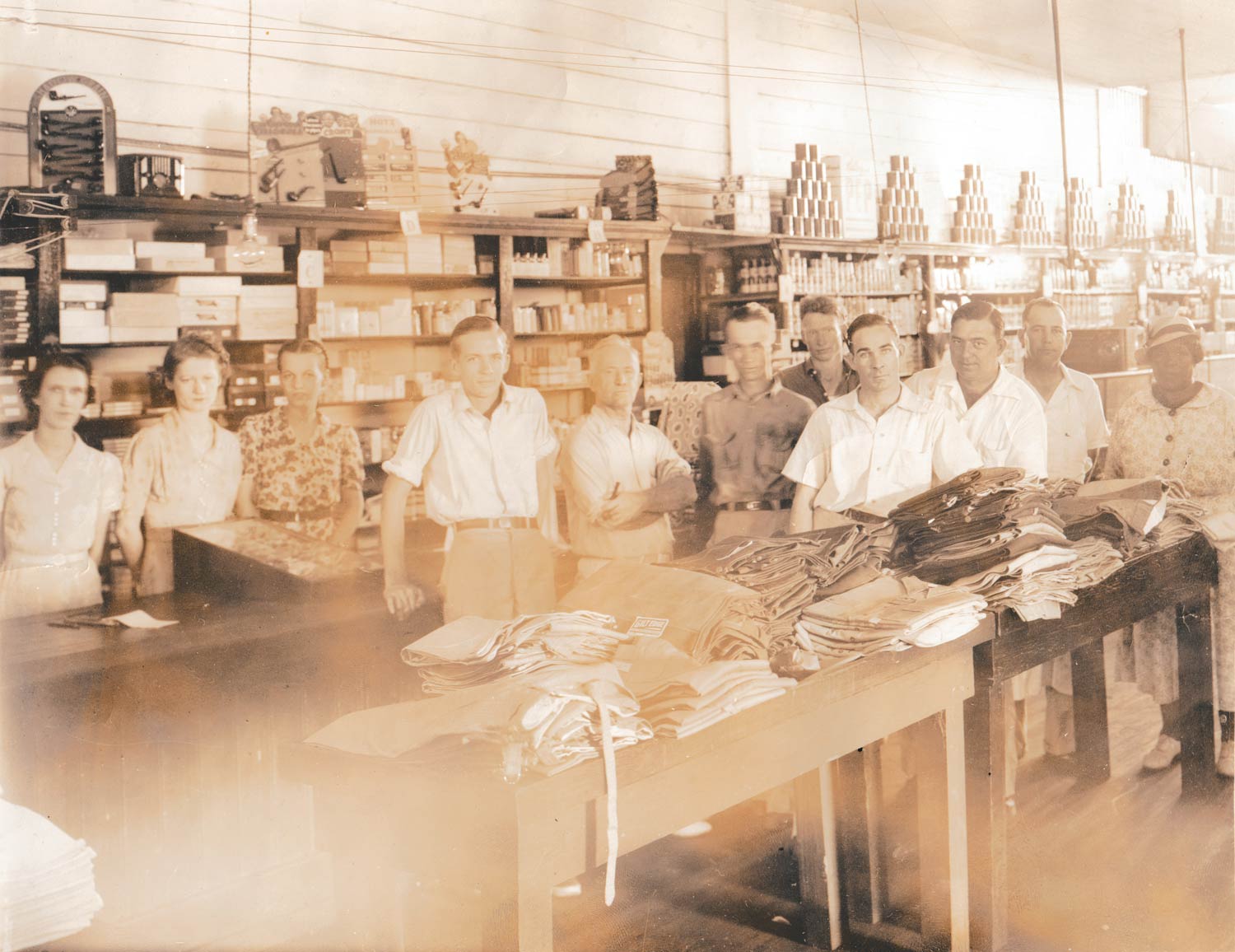
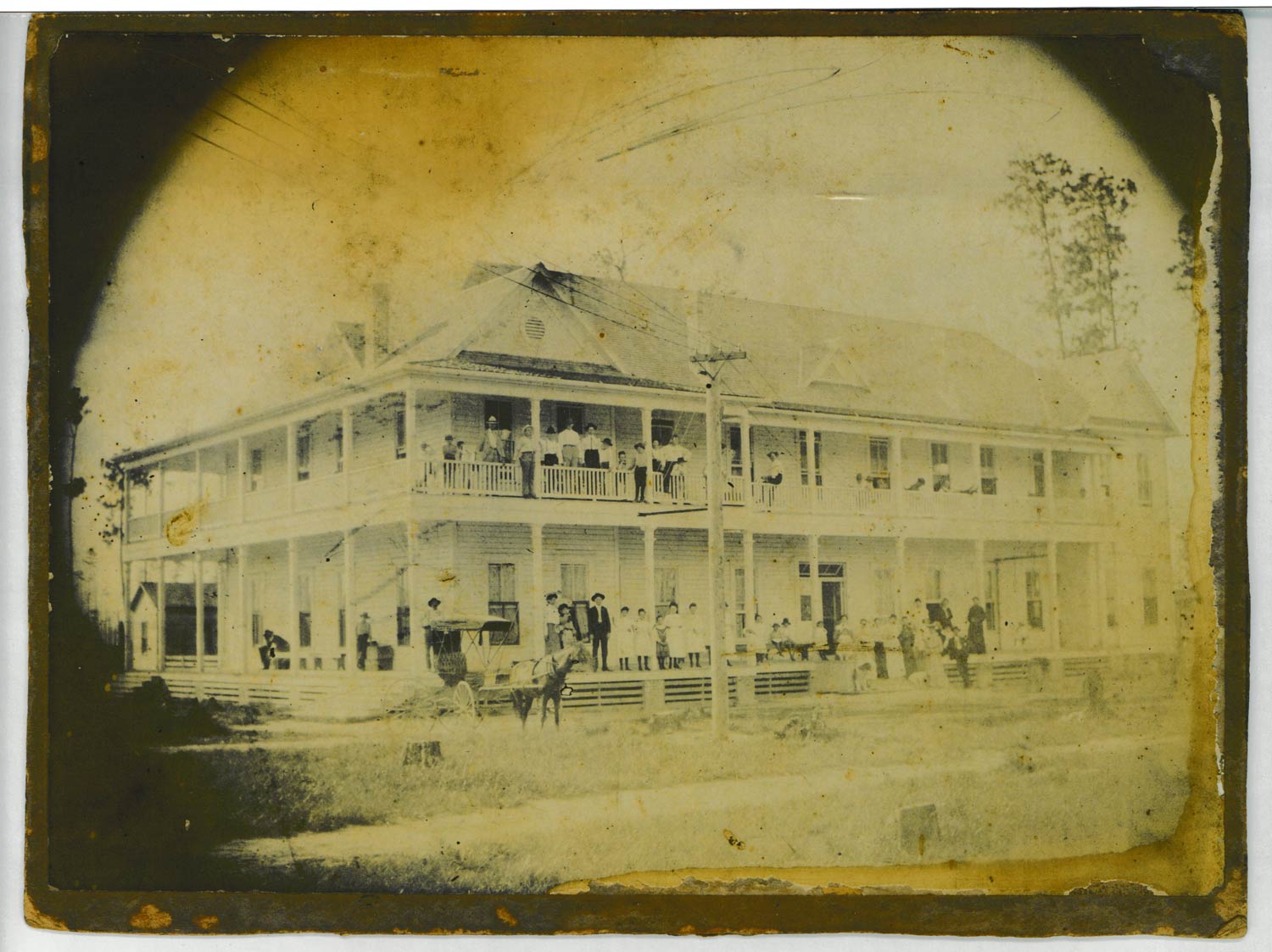
In southern Jasper County on the Gulf, Colorado and Santa Fe Railroad, Beaumont Lumber Company established a logging camp in 1892. He put his brother, Joseph, in charge as manager of the logging camp, the Yellow Bluff Tram Co. Joseph A. Carroll named the site, Carrolla. Thus, according to The Handbook of Texas, Buna’s history began.
The oldest logging camp in the county was at Cairo, later called Cairo Springs for the springs near Cairo school. The first post office in the area was established there in 1876; however a reduction in logging activities, which began in 1882, caused the post office to close by 1892. A new one was to open at Carrolla, which served the same area. Postal authorities refused to consider the name of Carrolla, due to its similarity to other sawmill towns.
So Joseph renamed the logging camp, Bunah, in honor of one of his nieces who visited the small community and charmed the residents. Maggie and Emily Richardson, in interviews, recalled her visit and departure and the suggestion that the town be named Bunah. When the post office sent the information to Washington, all the papers came back with the name spelled “Buna.” The name endured as did the town. Bunah Corley, whose married name was Bass, was last known to live in El Campti, Louisiana, and never was known to have returned to Buna.
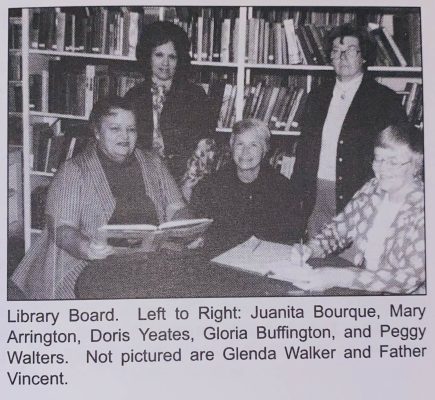
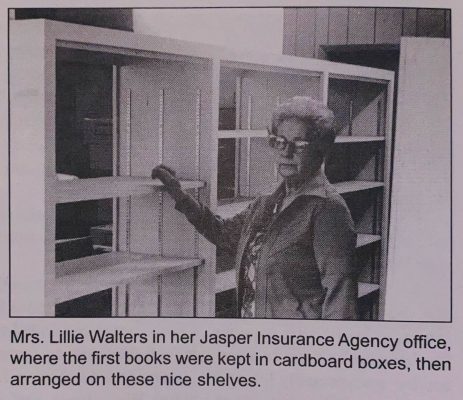
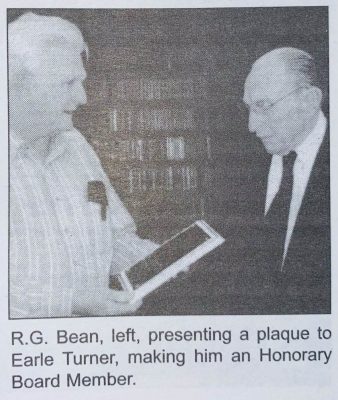
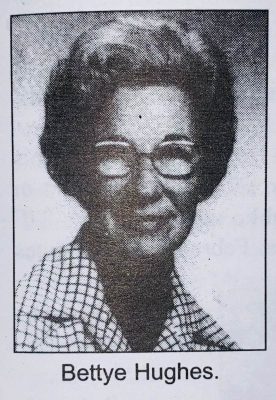
Once upon a time in Buna a handful of people had a dream. That dream was a public library for Buna. Like all good fairy tales this one has a happy ending. The Buna Public Library is a reality.
But getting back to the handful of people with the dream in 1972. Father Vincent had contacted Mrs. Roy Jenkins to see if the Garden Club would help back a library. Miss Alouisia Moore, then a librarian at Lamar University, was given the task of preparing the information for cards for the books that were donated.
Volunteers typed the catalogue cards for each book. Miss Moore also had the task of contacting numerous foundations to try and get funding for a library.
In February of 1973, the library officially opened with a tea sponsored by the Buna Garden Club. At this time the library was located in the Jasper Insurance Agency office in the Big B Shopping Center. Volunteers helped Miss Moore and her sister make and dress dolls that were sold for the fund. There were bake sales and raffles where individuals, merchants and organizations all helped to raise money.
Finally in April of 1977, the Buna Chamber of Commerce donated $500 to the building fund which brought the total to $5000.
In November of 1977, the land was paid for, and a little money was left in the till. The board of directors were laying the groundwork for the library’s new home: the cost of the building estimated to be in the neighborhood of $25,000.
In 1980, the books went into storage. The Jasper Insurance office had moved to a new office in the Whitehead Building, and there was no space available for the library.
Library board officers met at the site in March of 1981 to break ground for the library. It was being built with more than $50,000 in donations and grants, including a $25,000 grant from the Moody Foundation, a $15,000 gift from Bettye Hughes, a $3,000 gift from the Mixson family and some $10,000 from fund-raisers and various donations.
Time, Inc., announced it would triple-match library funds donations from $10 to $1,000 made by employees or retired employees of Temple-Eastex.
In March of 1982, the Buna Library was nearly completed. A donation of wiring from Temple-Eastex Inc. helped progress on the building.
Volunteers donated their time to install wiring. Money donated in memory of Dr. John I. Moore was used to help furnish the library. A donation from Beta Sigma Phi helped furnish the children’s section.
At last the Buna Public Library opened in its new building in February of 1983. The library had approximately 4,000 books which had been catalogued. The grand opening would be March 26.
The library is proof of what can be done by volunteers with a dream and plenty of determination to see it come true.
In 1987, the Buna Public Library became a member of the Houston Area Library System. Membership in HALS allows nonprofit libraries in unincorporated areas to have access to over 4,500 films, funds to purchase library materials, VCR movies, and interlibrary books to check out that smaller libraries do not have.
TLL Temple Foundations gave $20,000 for shelving and books in 1986. In 1989, the Temple Foundation granted $120,000 to the library for the purpose of adding 2500 sq. ft. to the existing library and 2500 sq ft for a meeting room upstairs.
Susan Fields, President of the Library Board, announced the grand opening for April 3, 1990, with County Judge Richard West officially cutting the ribbon.
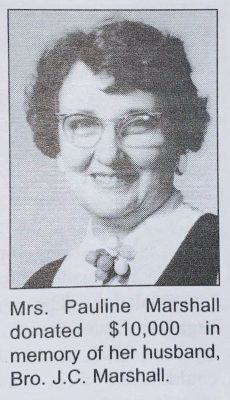
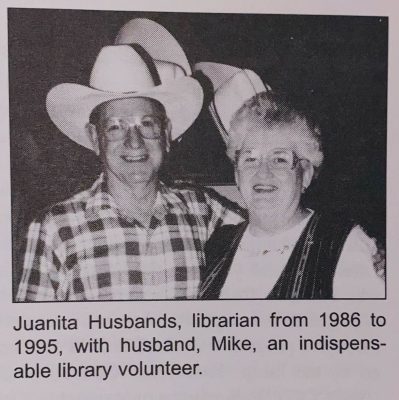

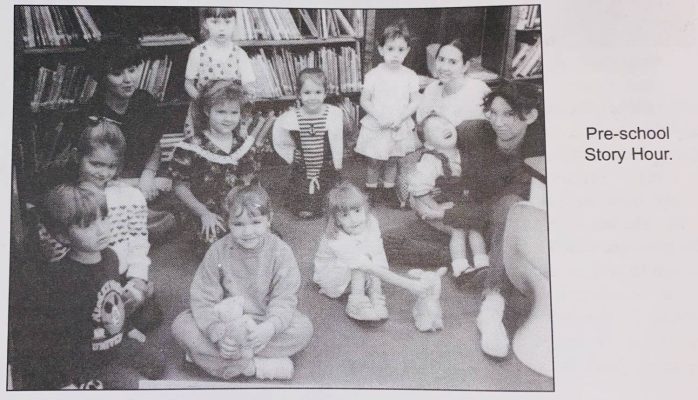
Bettye Hughes, ardent supporter of the library from the beginning, died on June 23,
1990. She left a trust of $50,000 to the library. The principal was not to be used, and the interest was to only be used for utilities.
On February 9, 1994, the library honored another loyal library supporter, Earle Turner. A plaque was presented to him, commemorating the many years he and his late wife, Clarice Mixson Turner, had been a part of the “Friends of the Library.” Mr. Turner’s latest contribution was $23,000 to enable the library to go to a computerized, automated checkout system.
With another grant from Temple Foundation, the library was able to install computers with an automation program for circulation. The program began in September of 1994.
By June, 2000, local churches could make their materials viewed on the public library computer. At the same time an approval agreement was entered into with the Buna ISD enabling interlibrary loans between the entities.
Further grants received under the leadership of librarian Lena Haynes White have been: Lois
Lenski Foundation, $1000 for the purchase of children’s books; second Tocker grant in 1998 for $6,000 to purchase two computers with desks for public internet access; TIF grant in 1998 purchased four more computers and three desks; February, 2001, Gates Foundation gave two more computers for internet with desktops just for children who do not have internet access. Through Southwestern Bell surplus, desks and tables with chairs were obtained.
The 25th Anniversary Celebration of the Buna Public Library was celebrated on March 11, 1998. James Brown of KFDM Channel 6 was invited as a special guest, and to autograph his new cookbook, which he sold to many Bunaites. He also contributed his book to the library, along with a donation. In return, he was presented the book, Buna Remembered, The Places, which the local historians have published for the library.
Grants, donations, memorials and volunteers are a must to maintain small libraries. Buna has been fortunate to have Library Boards that have been frugal with funds, insuring that the Buna community has available the maximum books and materials its library can provide. Many have served on the board and know what it takes to provide the many services such as: Adult Literacy Program, led by Mr. and Mrs. Gerald Bean, who in 1990 had eleven tutors; GED program; craft lessons; Book Fairs; Children’s Reading program; Friends of the Library; Story Hour for small children, and many other services for the community.
The first paid librarian was Juanita Husbands, who retired in 1995 and continues to serve as a volunteer. Lena Haynes White became the new librarian. Both have clocked many hours in workshops keeping updated on library procedures, problems and solutions. Any grants available, which would be beneficial for Buna’s library, are pursued diligently by both ladies.
From approximately 2,407 library books and materials, and no income in 1974, to 25,281 books and materials, and operation in the black in 1990, the Buna Public Library has come “a long way, baby!”
A complete history of the local library which includes hundreds of pictures has been kept and organized by Juanita Husbands for the enjoyment of all.
(Information was researched and compiled by Juanita Husbands from Board minutes, notebooks, and personal interviews)